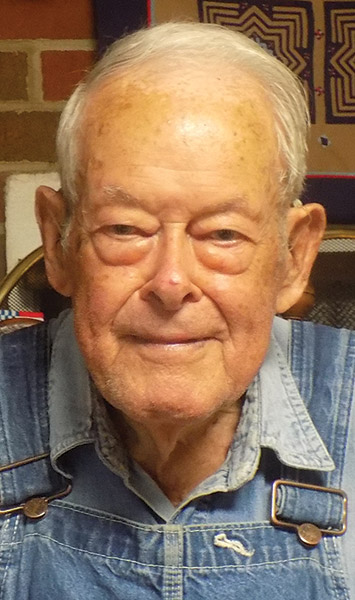His service still lives in his dreams
Drafted in 1952, Ray Duncan vividly recalls his part of the Korean War
Last week (June 25) marked the 70th anniversary of the start of the Korean War, and Ray Duncan still vividly recalls his experiences during that conflict.
“I think about it all the time,” said Ray, 88, who with his wife, Ola, lives in the Blowing Springs community. “I have dreams about it. I was at the front in 1953 and experienced plenty of hard fighting. I can remember it all and consider myself to be lucky to have survived it and still be alive today to talk about it. I am thankful to the good Lord for protecting me.”
Drafted into the U.S. Army in 1952 when he was working at a warehouse in Toledo, Ohio, Ray served his basic training in California before being shipped to Korea in early 1953. The war had been fought for more than two-and-a-half years at that point and Ray’s unit would be sent into an area where fighting was heavy.
“There was a battle just about every day,” Ray said of a period lasting several months. “The terrain was very hilly and it seemed as though we were always battling to take a hill. In some cases, the North Koreans and sometimes the Chinese were close. You could see the bullets flying and I lost many buddies on both sides of me, including a first cousin.”
Ray did not escape the war unscathed, but he considers a wound he suffered during one of those battles to be inconsequential compared with what happened to many members of his unit.
“We were fighting our way through a valley and onto a hill,” Ray said. “I had to crawl all the way before I got to the top of that hill. A piece of shrapnel hit me in the forehead. It was not a big deal. I saw what was happening to my buddies and a cut on my forehead was nothing. I never even reported it to the medics.”
One of Ray’s strongest memories of the war still particularly haunts him.
“The North Koreans were using children to do a lot of their dirty work,” Ray said. “They didn’t think the Americans would kill children. We spotted a six-year-old girl carrying ammunition and our commander ordered her to be shot. Nobody would do it. He finally shot her himself. It was awful and I still have dreams about that little girl.”
Fighting continued during the first half of 1953 until an armistice was signed between the North Koreans and U.S.-led United Nations forces in July. It was a ceasefire that is still technically in effect 67 years later.
President Harry Truman ordered the military to be integrated during the late 1940s and the full effects of that order occurred during the Korean War. Sammy Davis Jr., who would go on to a successful career as an entertainer, was a member of Ray’s unit.
“Sammy and I became good friends,” Ray said of Davis, who died in 1990.
Sometime after the armistice, Ray was transferred to Okinawa, where he served the remainder of his Army time, promoted eventually to sergeant.
“When I had a chance to re-enlist, I decided I had enough,” Ray said. “I wanted to go home.”
Ray, who was raised above Briceville, would marry Betty and they raised two sons – one is deceased. Ray worked 38 years at CUB before retiring.
“I saw a lot of blood and plenty of bad stuff which I still think about today,” Ray said of his Korean War experience. “I served doing the best I could in the service of my country and I thank the Lord for allowing me to safely come home.”



